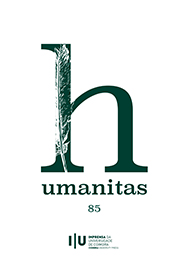The Use of Verb Tenses in the Virgilian Cento Hippodamia: The Chariot Race and Pelops’ Victory (vv. 100-150)
DOI:
https://doi.org/10.14195/2183-1718_85_9Keywords:
Virgilian cento, Hippodamia, Aeneid, verb tensesAbstract
This paper investigates the employment of verbal tenses in the Virgilian cento Hippodamia and their narrative function, using Virgil’s Aeneid as its temporal reference point. The study builds upon Görler’s (1985) findings regarding the predominance of the historical present in Virgil’s epic (occurring three times more frequently than the perfect tense), a pattern that remarkably persists in the cento (107 present vs. 36 perfect forms). Particular attention is given to the chariot race episode (vv. 100-150), where this disparity widens considerably (42 present vs. 7 perfect forms, a 6:1 ratio). Moving beyond traditional interpretations that view this phenomenon as mere stylistic “mannerism”, we propose that the strategic selection of tenses serves specific narrative purposes. Our methodology combines an analysis of tense usage in the Aeneid with a comparative examination of its adaptation in the cento, revealing how temporal variations enhance dramatic tension. The results indicate that the centonarius selected Virgilian verses not only for their thematic relevance but also for their temporal characteristics, consciously employing them to achieve particular narrative effects. This perspective offers fresh understanding of cento composition techniques and their sophisticated intertextual dialogue with Virgil’s original text.
Downloads
Downloads
Published
Issue
Section
License
Copyright (c) 2025 Humanitas

This work is licensed under a Creative Commons Attribution 4.0 International License.
Authors retain copyright and grant the journal right of first publication with the work simultaneously licensed under a Creative Commons Attribution License that allows sharing the work with recognition of authorship and initial publication in this journal.










